Unilateral Route Method to Estimate Practical Mutual Inductance for Multi-Coil WPT System
Abstract
1. Introduction
2. Theoretical Analysis
2.1. Practical and Ideal Mutual Inductance between Two Coils
2.2. Measurement Method for the Coil’s Parameters and Ideal Mutual Inductance between Two Coils
2.3. Transfer Impedance of Multi-Coil Using the Proposed Circuit Model
3. Experimental Results and Discussion
3.1. Two Coils Analysis
3.2. Three Coils Analysis
3.3. Analysis of Unilateral Method for the Number of Coils
4. Conclusions
Author Contributions
Funding
Conflicts of Interest
References
- Zhong, W.X.; Lee, C.K.; Hui, S.Y.R. General analysis on the use of tesla’s resonators in domino forms for wireless power transfer. IEEE Trans. Ind. Electron. 2013, 60, 261–270. [Google Scholar] [CrossRef]
- Kim, J.H.; Park, B.C.; Lee, J.H. Optimum design of WPT relay system by controlling capacitance. Microw. Opt. Technol. Lett. 2014, 56, 1658–1661. [Google Scholar] [CrossRef]
- Sun, Y.; Liao, Z.J.; Ye, Z.H.; Tang, C.S.; Wang, P.Y. Determining the maximum power transfer points for MC-WPT systems with arbitrary number of coils. IEEE Trans Power Electron. 2018, 33, 9734–9743. [Google Scholar] [CrossRef]
- Seo, D.W. Design method of three-coil WPT system based on critical coupling condition. IEEE J. Emerg. Sel. Top. Power Electron. 2019. [Google Scholar] [CrossRef]
- Sun, T.; Xie, X.; Li, G.; Gu, Y.; Wang, Z. Indoor wireless power transfer using asymmetric directly-strong-coupling mechanism. Microw. Opt. Technol. Lett. 2013, 55, 250–253. [Google Scholar] [CrossRef]
- Xu, B.; Li, Y. Investigation of surface wave propagation along a multi-coil wireless power transfer system. Microw. Opt. Technol. Lett. 2016, 58, 2261–2265. [Google Scholar] [CrossRef]
- Jadidian, J.; Katabi, D. Magnetic MIMO: How to charge your phone in your pocket. In Proceedings of the 20th Annual International Conference on Mobile Computing and Networking (MOBICOM), Maui, HI, USA, 7–11 September 2014; pp. 495–506. [Google Scholar]
- Shi, L.; Kabelac, Z.; Katabi, D.; Perreault, D. Wireless power hotspot that charges all of your devices. In Proceedings of the 21th Annual International Conference on Mobile Computing and Networking (MOBICOM), Paris, France, 7–11 September 2015; pp. 2–13. [Google Scholar]
- Sritongon, C.; Wisestherrakul, P.; Hansupho, N.; Nutwong, S.; Sangswang, A.; Naetiladdanon, S.; Mujjalinvimut, E. Novel IPT multi-transmitter coils with increase misalignment tolerance and system Efficiency. In Proceedings of the 2018 IEEE International Symposium on Circuits and Systems (ISCAS), Florence, Italy, 27–30 May 2018; pp. 1–5. [Google Scholar]
- Nguyen, M.Q.; Ta, K.; Dubey, S.; Chiao, J.C. Frequency modes in a MIMO wireless power transfer system. In Proceedings of the 2017 IEEE Asia Pacific Microwave Conference (APMC), Kuala Lumpar, Malaysia, 13–16 November 2017; pp. 146–149. [Google Scholar]
- Kim, D.H.; Ahn, D. Maximum efficiency point tracking for multiple-transmitters wireless power transfer. IEEE Trans. Power Electron. 2019. [Google Scholar] [CrossRef]
- Fu, M.; Zhang, T.; Ma, C.; Zhu, X. Efficiency and optimal loads analysis for multiple-receiver wireless power transfer systems. IEEE Trans. Microw. Theory Tech. 2015, 63, 801–812. [Google Scholar] [CrossRef]
- Alley, C.L.; Atwood, K.W. Electronic Engineering; Wiley: Hoboken, NJ, USA, 1973; p. 199. [Google Scholar]
- Piri, M.; Jaros, V.; Fricaldsky, M. Verification of a mutual inductance calculation between two helical coils. In Proceedings of the 2015 16th International Scientific Conference on Electric Power Engineering (EPE), Kouty nad Desnou, Czech Republic, 20–22 May 2015; pp. 712–717. [Google Scholar]
- Wu, L.; Lu, K.; Xia, Y. Mutual inductance calculation of two coaxial solenoid coils with iron core. In Proceedings of the 2018 21st International Conference on Electrical Machines and System (ICEMS), Jeju, Korea, 7–10 October 2018; pp. 1804–1808. [Google Scholar]
- Ariffin, A.; Inamori, M. Influence of mutual inductance measurement for high efficiency wireless power transmission. In Proceedings of the 2018 7th International Conference on Renewable Energy Research and Applications (ICRERA), Paris, France, 14–17 October 2018; pp. 949–953. [Google Scholar]
- Zhang, X.; Meng, H.; Wei, B.; Wang, S.; Yang, Q. Mutual inductance calculation for coils with misalignment in wireless power transfer. IET J. Eng. 2019, 16, 1041–1044. [Google Scholar] [CrossRef]
- Rakhymbay, A.; Khamitov, A.; Bagheri, M.; Alimkhanuly, B.; Lu, M.; Phung, T. Precise analysis on mutual inductance variation in dynamic wireless charging of electric vehicle. Energies 2018, 11, 624. [Google Scholar] [CrossRef]
- Hackl, S.; Lanschutzer, C.; Raggam, P.; Randeu, W.L. A Novel Method for Determining the Mutual Inductance for 13.56MHz RFID Systems. In Proceedings of the 2008 6th International Symposium on Communication Systems, Networks and Digital Signal Processing, Graz, Austria, 25–25 July 2008; pp. 297–300. [Google Scholar]
- Pozar, D.M. Microwave Engineering, 4th ed.; Wiley: Hoboken, NJ, USA, 2011; p. 181. [Google Scholar]
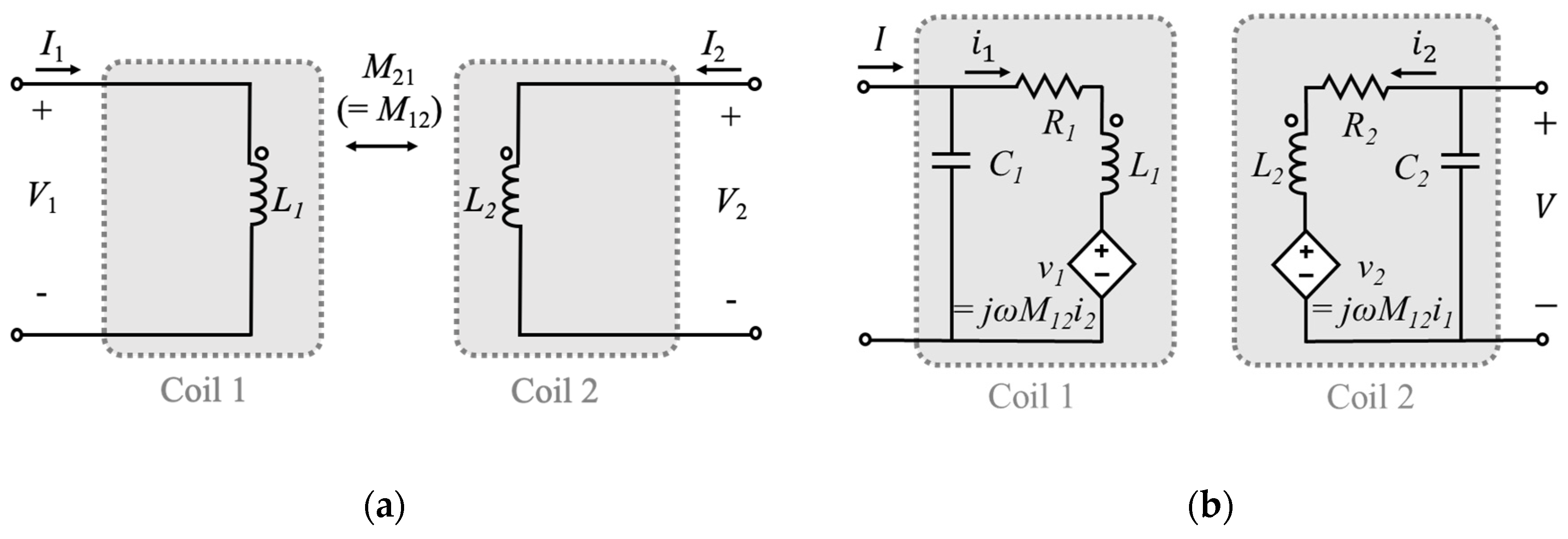
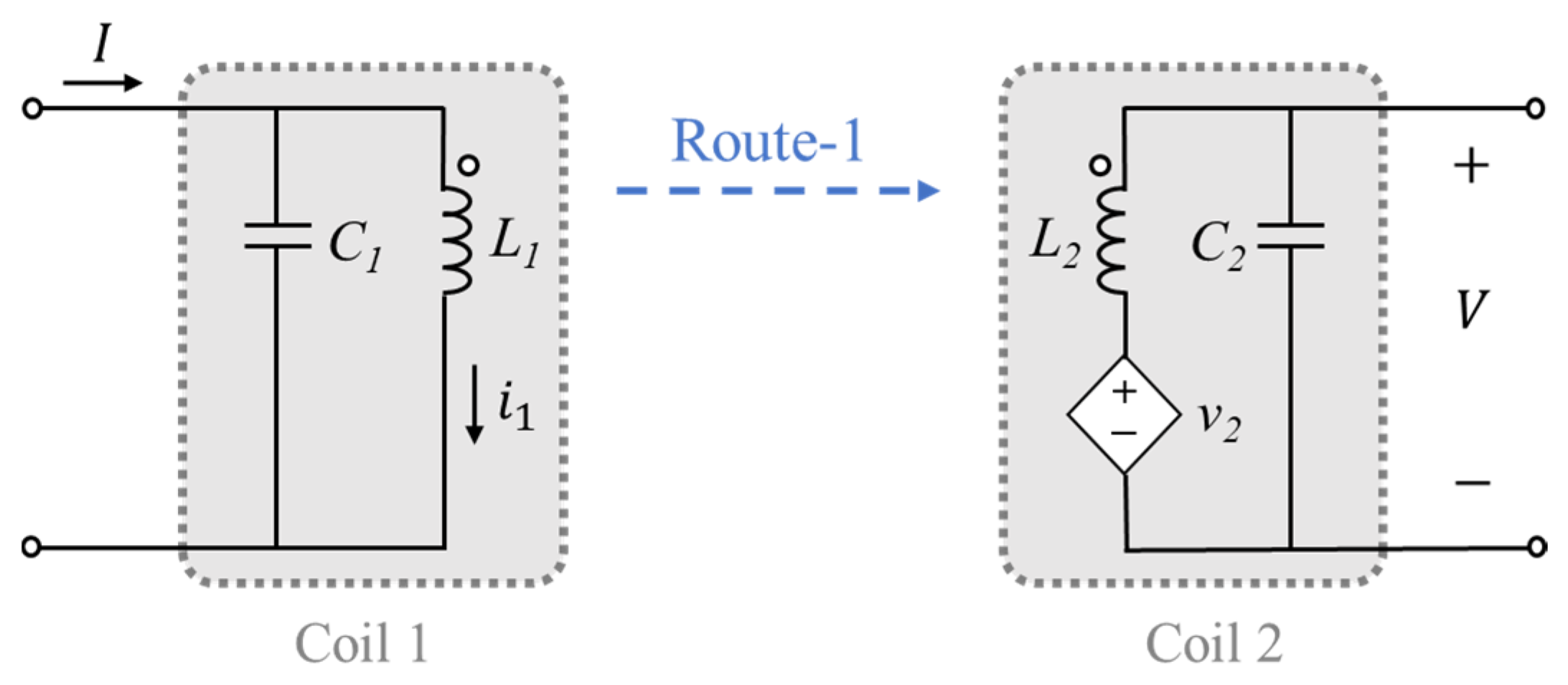
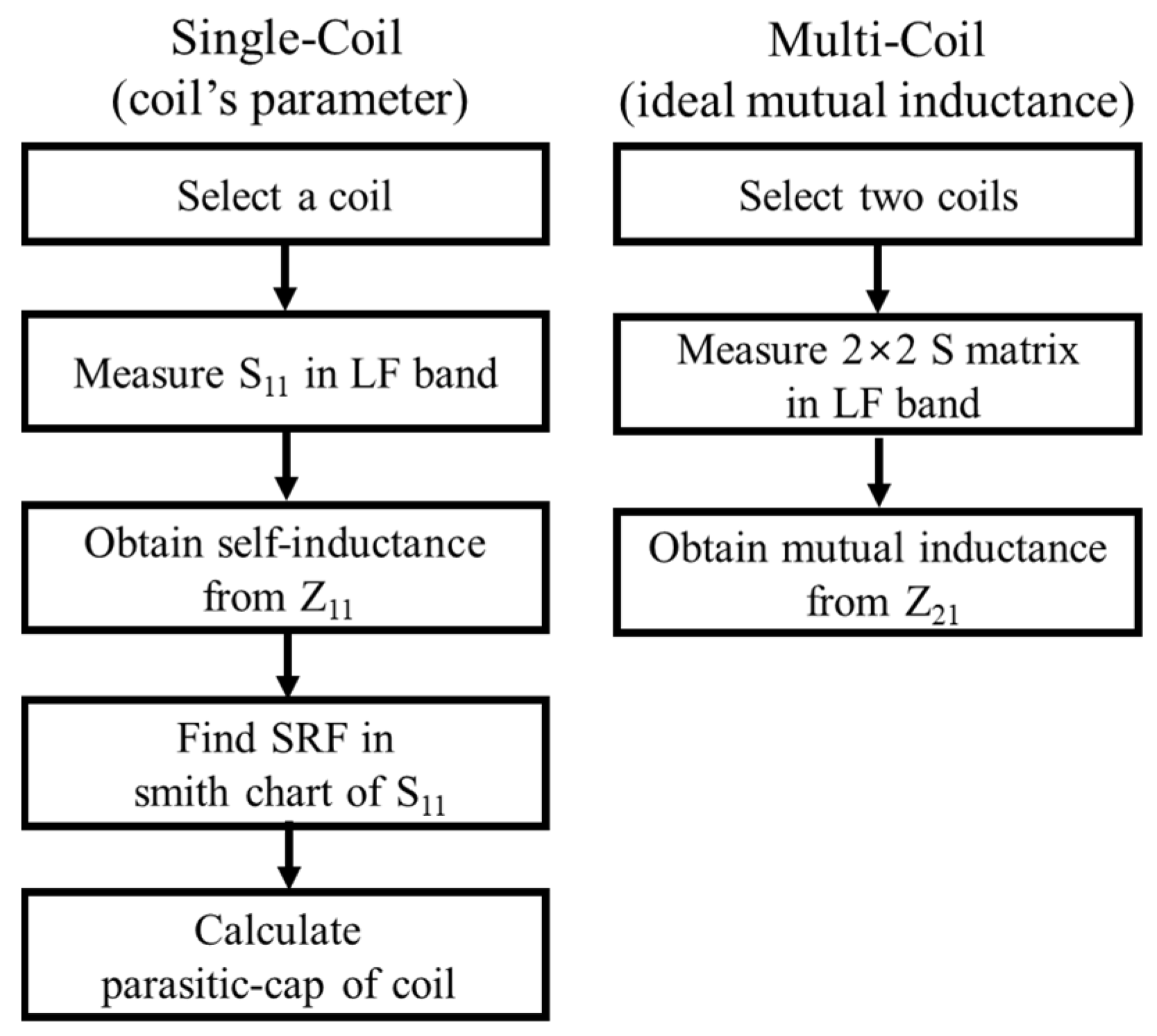
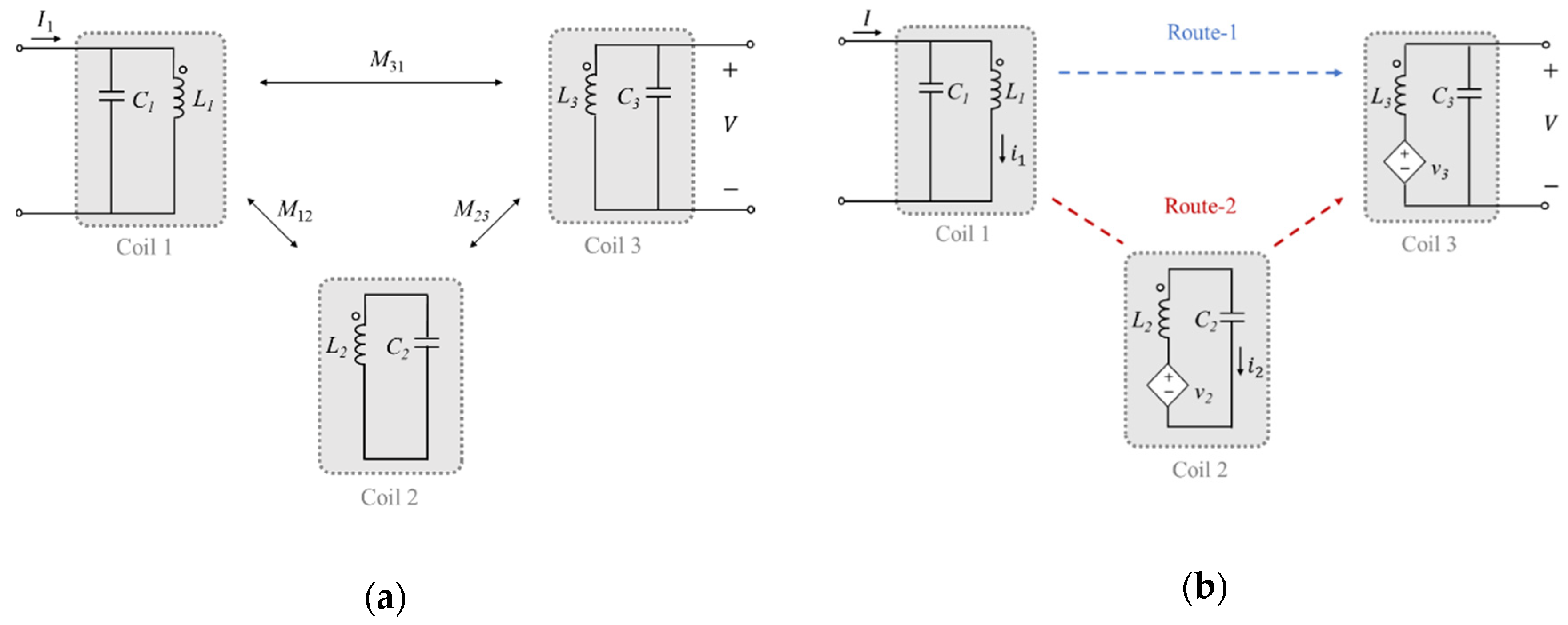

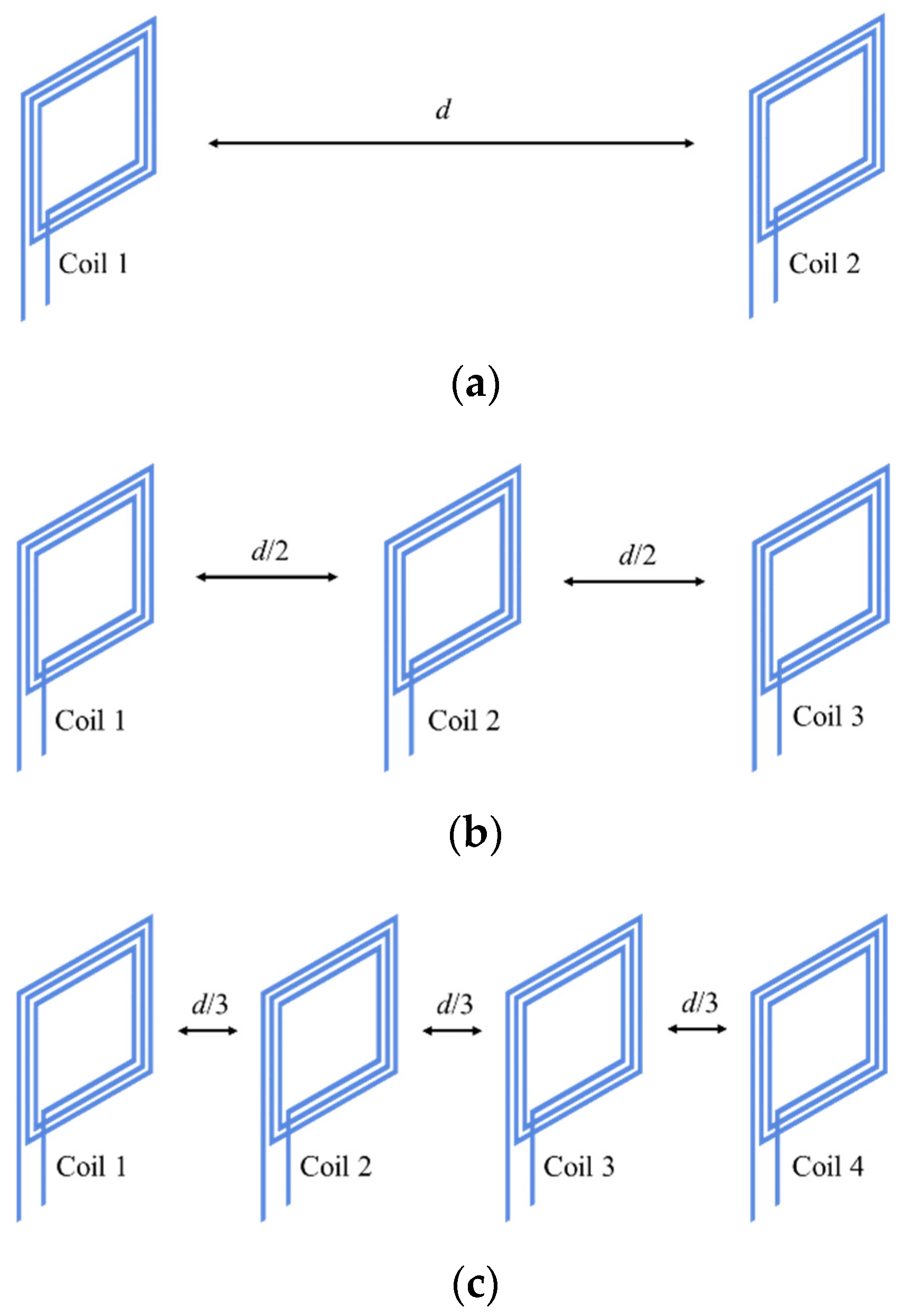
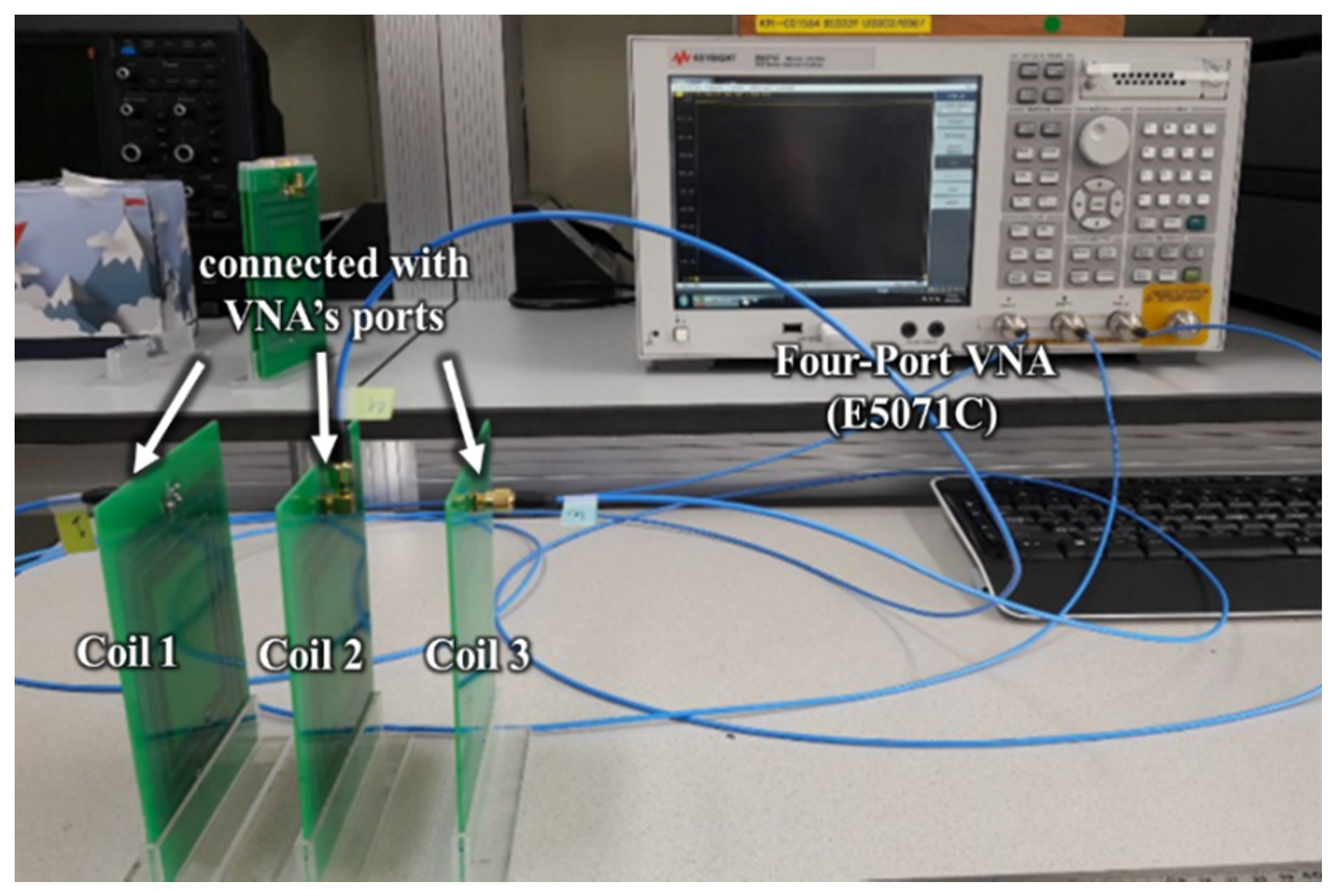


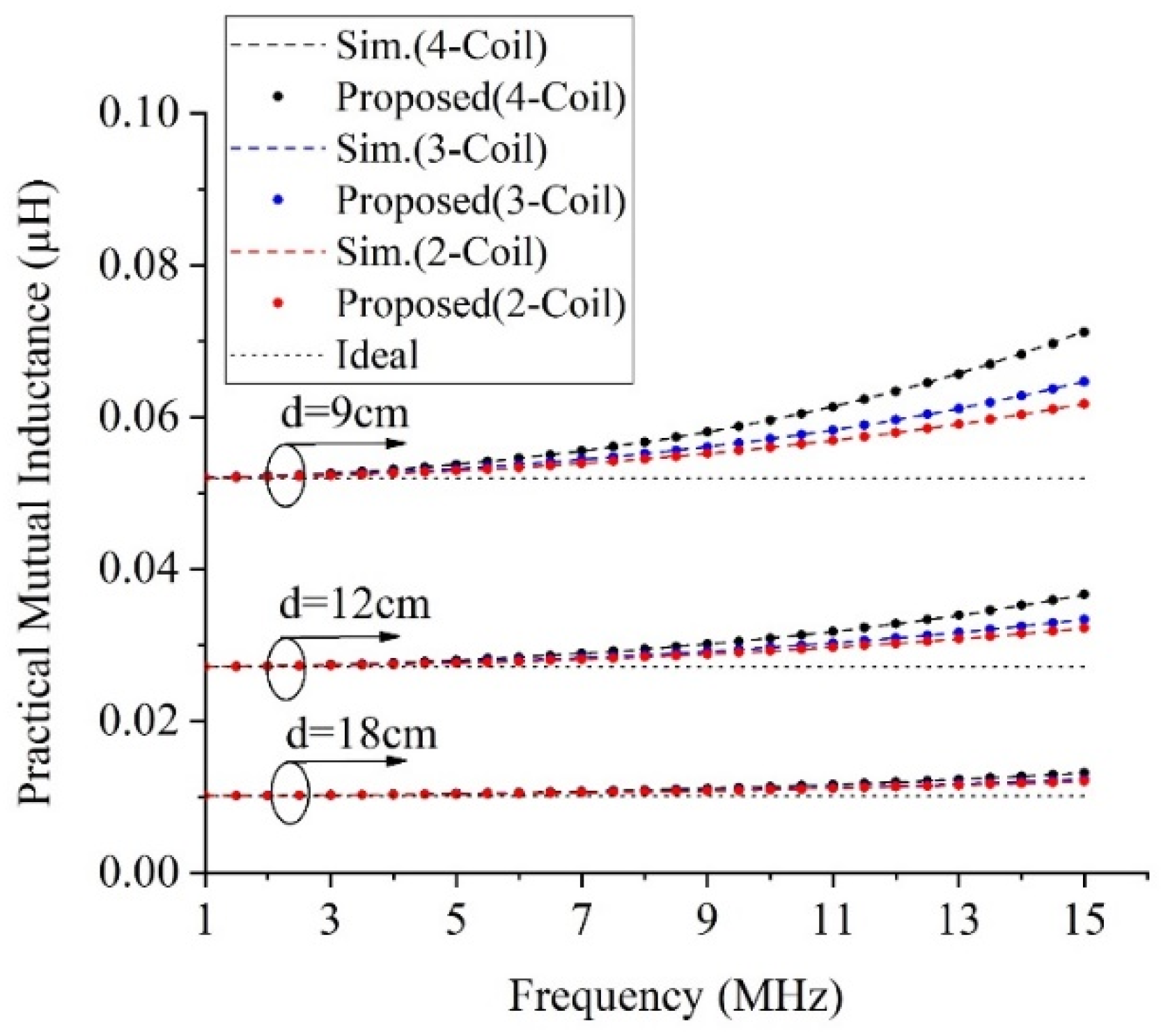
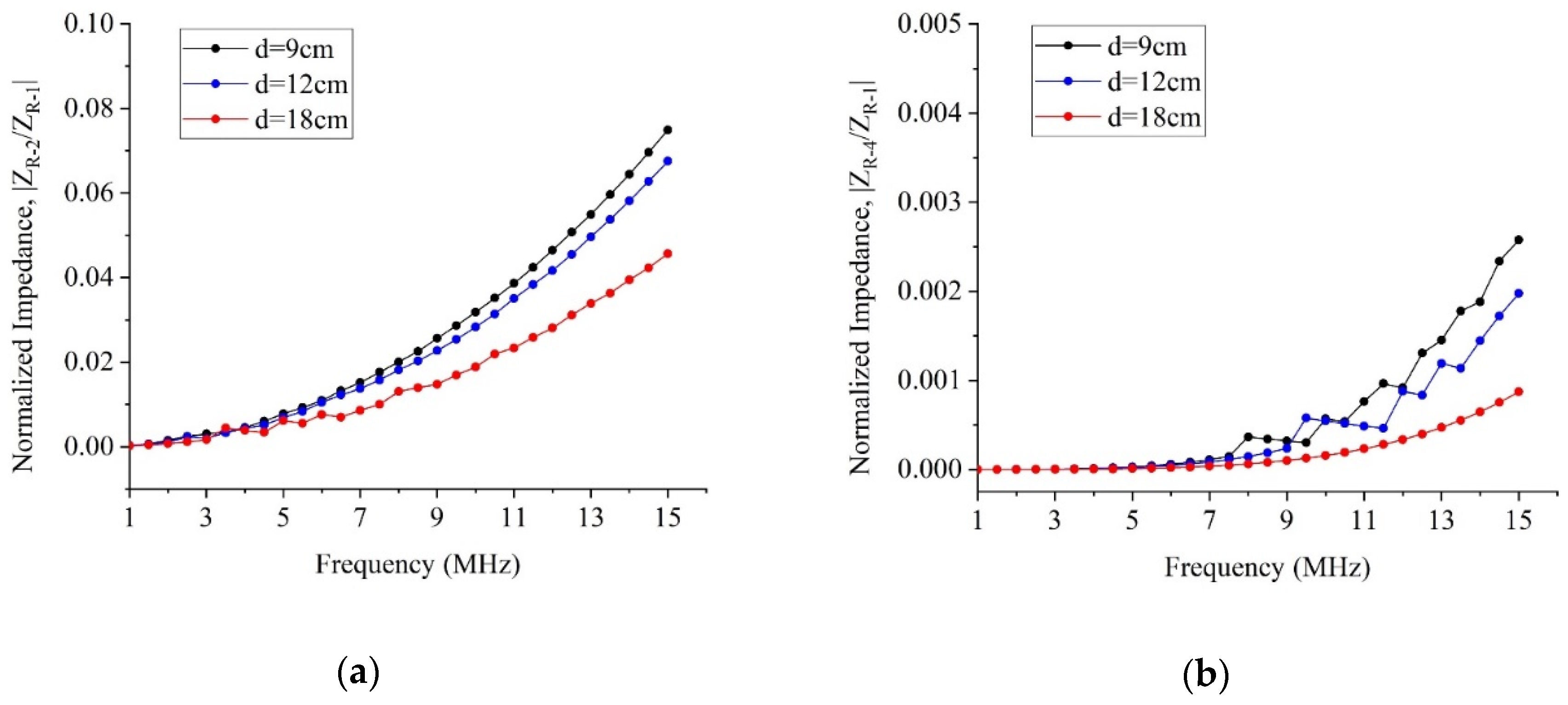
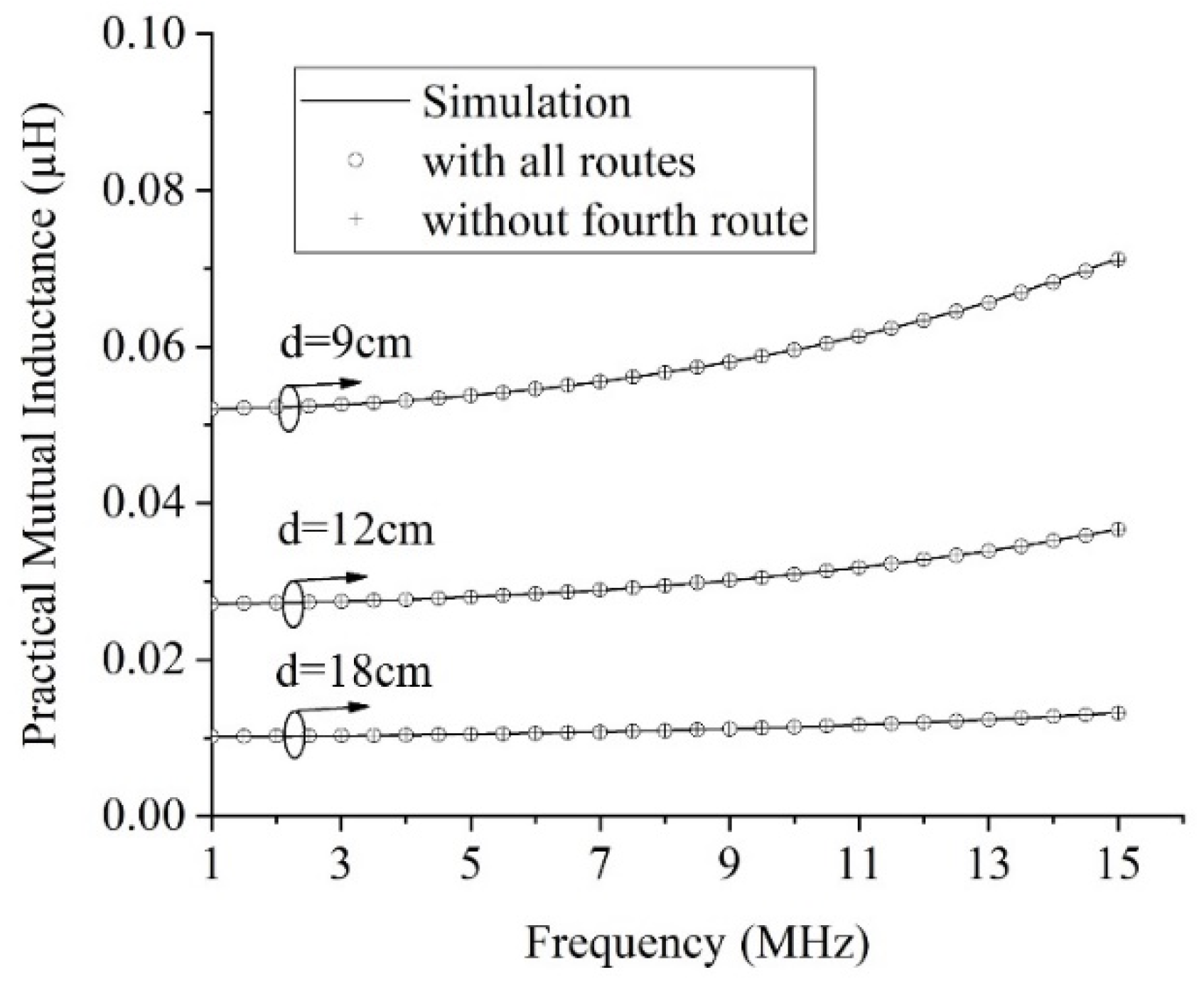
| Parameter | Coila | Coilb |
|---|---|---|
| Inductance (μH) | 1.13 | 3.83 |
| Parasitic cap. (pF) | 8.22 | 15.17 |
| Two Cases | Coil 1 | Coil 2 | Coil 3 |
|---|---|---|---|
| Case#1 | Coila | Coila | Coila |
| Case#2 | Coila | Coilb | Coila |
| 6.78 MHz | 13.56 MHz | |||
|---|---|---|---|---|
| Mean (μH) | NRMSE (%) | Mean (μH) | NRMSE (%) | |
| Two coils | −2.7 × 10−4 | 0.68 | 16.9 × 10−4 | 1.67 |
| Case#1 | −5.8 × 10−4 | 1.03 | 20.0 × 10−4 | 1.92 |
| Case#2 | −6.5 × 10−4 | 0.84 | 7.3 × 10−4 | 2.81 |
© 2020 by the authors. Licensee MDPI, Basel, Switzerland. This article is an open access article distributed under the terms and conditions of the Creative Commons Attribution (CC BY) license (http://creativecommons.org/licenses/by/4.0/).
Share and Cite
Jeon, S.-J.; Lee, S.-H.; Seo, D.-W. Unilateral Route Method to Estimate Practical Mutual Inductance for Multi-Coil WPT System. Electronics 2020, 9, 377. https://doi.org/10.3390/electronics9020377
Jeon S-J, Lee S-H, Seo D-W. Unilateral Route Method to Estimate Practical Mutual Inductance for Multi-Coil WPT System. Electronics. 2020; 9(2):377. https://doi.org/10.3390/electronics9020377
Chicago/Turabian StyleJeon, Seon-Jae, Sang-Hoon Lee, and Dong-Wook Seo. 2020. "Unilateral Route Method to Estimate Practical Mutual Inductance for Multi-Coil WPT System" Electronics 9, no. 2: 377. https://doi.org/10.3390/electronics9020377
APA StyleJeon, S.-J., Lee, S.-H., & Seo, D.-W. (2020). Unilateral Route Method to Estimate Practical Mutual Inductance for Multi-Coil WPT System. Electronics, 9(2), 377. https://doi.org/10.3390/electronics9020377






